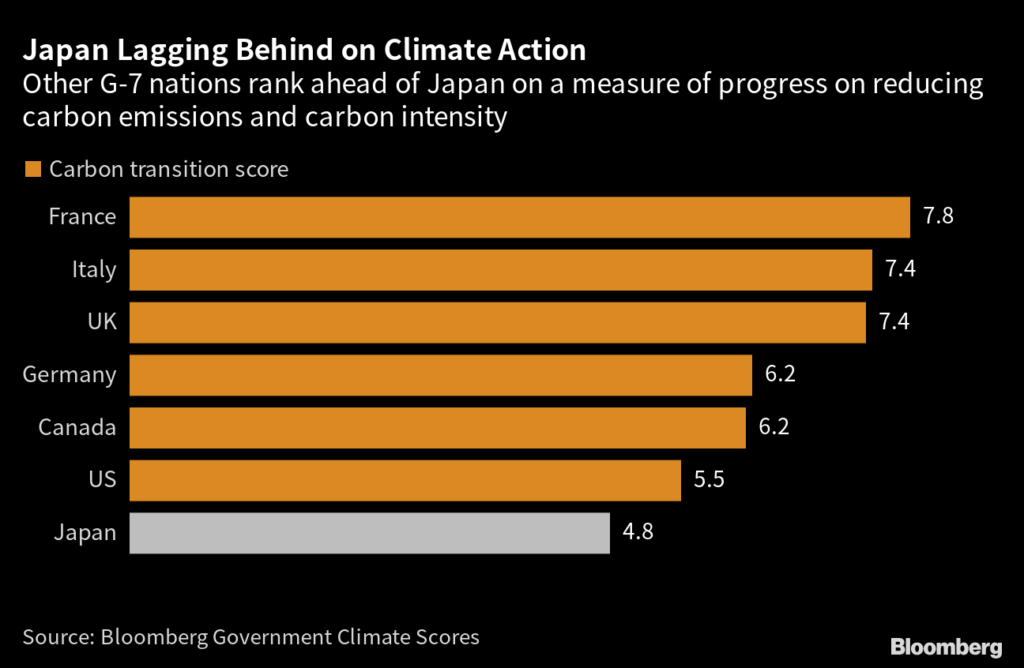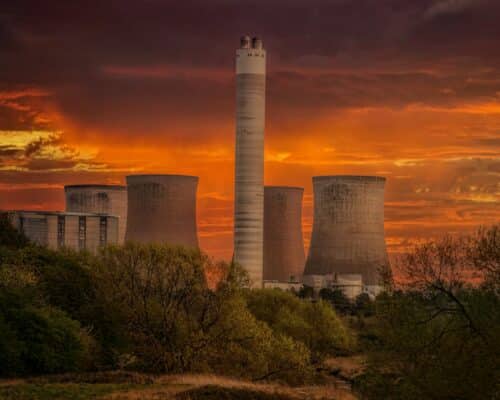Current State And Future Of Japan’s Carbon Emissions
KenSoftTH / Shutterstock.com
26 April 2023 – by Eric Koons Comments (0)
Japan’s carbon emissions give a glimpse into the country’s progress towards its climate goals. The country’s emissions peaked in 2013 and were in decline until 2020, when emissions levels were close to 1990 levels. This is a positive trend.
However, 2021 saw a slight increase in GHG emissions burgeoned by the country’s reopening after COVID-19. This raises questions about the government’s emphasis on its 2030 and 2050 climate pledges.
Japan is hosting the 2023 G7 Summit, and there are more questions on how Japan plans to balance its fossil fuel consumption and net-zero ambitions. In the last several months, Japan has made it clear that it supports more investment in natural gas and the deployment of low-carbon fossil fuel technologies. Meanwhile, it is also reluctant to phase out coal power.
Other G7 members are pushing back against these positions, which will likely be a point of discussion at the summit.
Does Japan Have High Carbon Emissions?
In simple terms, yes – Japan has high carbon emissions. We can view Japan’s emissions through two lenses: absolute and per capita.
Japan released over 1 billion tonnes of carbon dioxide in absolute emissions in 2021, accounting for 2.87% of global emissions. Above Japan were China, the United States, India and Russia.
However, the gap between the largest emitters (China and the United States) and Japan is significant. Japan’s emissions were only 8.7% of China’s and 22.8% of the United States. So, while Japan is in the top five global emitters, it is far below the largest emitters.
When we view CO2 emissions per capita, Japan’s ranking falls significantly to 36th, with total per capita emissions of 8.57 tonnes of CO2. While not in the top five, it is still within the top 20%.
Understanding Carbon Dioxide Emissions: Absolute Versus Per Capita
Both methods have their pros and cons. The per capita method is skewed for smaller nations, whereas total emissions are spread out among fewer residents. Industry emissions are more impactful on per capita emissions in these countries.
This is an issue for countries with heavy fossil fuel industries like oil and gas, shipping and manufacturing. The greenhouse gases emissions from these activities count towards the producing country’s emissions, yet the products are traded and consumed in other countries.
Because of this, per capita emissions do not necessarily equate to climate progress. For example, Iceland has higher per capita emissions than Japan but also sources 99.99% of its primary energy from renewable sources. Iceland’s carbon emissions are primarily from heavy industry, which produces raw materials for use in other countries.

This raises the question: who is really responsible for these emissions? Is it the consumers who drive production or the countries that do the work?
On the other hand, the overall emissions method creates the idea that only the most significant emitters should be reducing their emissions to combat global warming. Inherently, Iceland will never have as many emissions and energy consumption as Japan, which has a population over 330 times larger than Iceland’s. Yet, Iceland and Japan have an equal responsibility to reduce emissions.
Japan’s CO2 Emissions Compared to the G7
Japan is second for absolute and third for per capita emissions in the G7. While not the highest in either category, Japan has been slow to shift away from fossil fuels compared to the highest emitter, the United States. The US is seeing steady growth in its renewable energy share due to a sharp decline in coal power. Alternatively, Japan’s reliance on coal is steadily growing.
This is likely one of the reasons that Bloomberg ranks Japan as the lowest of the G7 nations in terms of progress towards reducing emissions and carbon intensity.
What Are Japan’s Greenhouse Gas Emissions Targets?
Japan aims to be net-zero by 2050 with the interim goal of a 46% emissions reduction by 2030. Japan will reach the 2030 goal by doubling its renewable energy capacity to 38% of the total power supply and reinvigorating the nuclear energy industry that declined post-Fukushima in 2011.
The 2050 net-zero target will rely on continued renewable energy growth, as well as the support of “clean” thermal coal power plants. However, betting on emissions-free fossil fuel generation is extremely risky and unviable with existing technology.

Currently, low-carbon fuels like hydrogen and ammonia are not scalable or cost-effective. Bloomberg estimates the industry will need over USD 150 billion in subsidies by 2030, on top of billions in private sector investment, to become viable potentially. With only six years to close this funding gap, it seems unlikely to succeed.
Carbon capture will also be needed to remove emissions directly during thermal electric power generation. So far, carbon capture projects in the power sector have either performed poorly or become too expensive to finish. There are major questions surrounding whether carbon capture will be financially viable in Japan.
Renewable Energy Is Japan’s Solution
Instead of decarbonising the fossil fuel industry, Japan should focus on improving its renewable energy capacity and energy efficiency. The country has significant potential for offshore wind, solar and geothermal energy. This will enhance the country’s energy security and is much more assured to achieve carbon neutrality than betting on unproven technology.
Furthermore, this aligns with the goals of other G7 nations and their collective commitments to reduce emissions.
by Eric Koons
Eric is a passionate environmental advocate that believes renewable energy is a key piece in meeting the world’s growing energy demands. He received an environmental science degree from the University of California and has worked to promote environmentally and socially sustainable practices since. Eric’s expertise extends across the environmental field, yet he maintains a strong focus on renewable energy. His work has been featured by leading environmental organizations, such as World Resources Institute and Hitachi ABB Power Grids.
Read more


